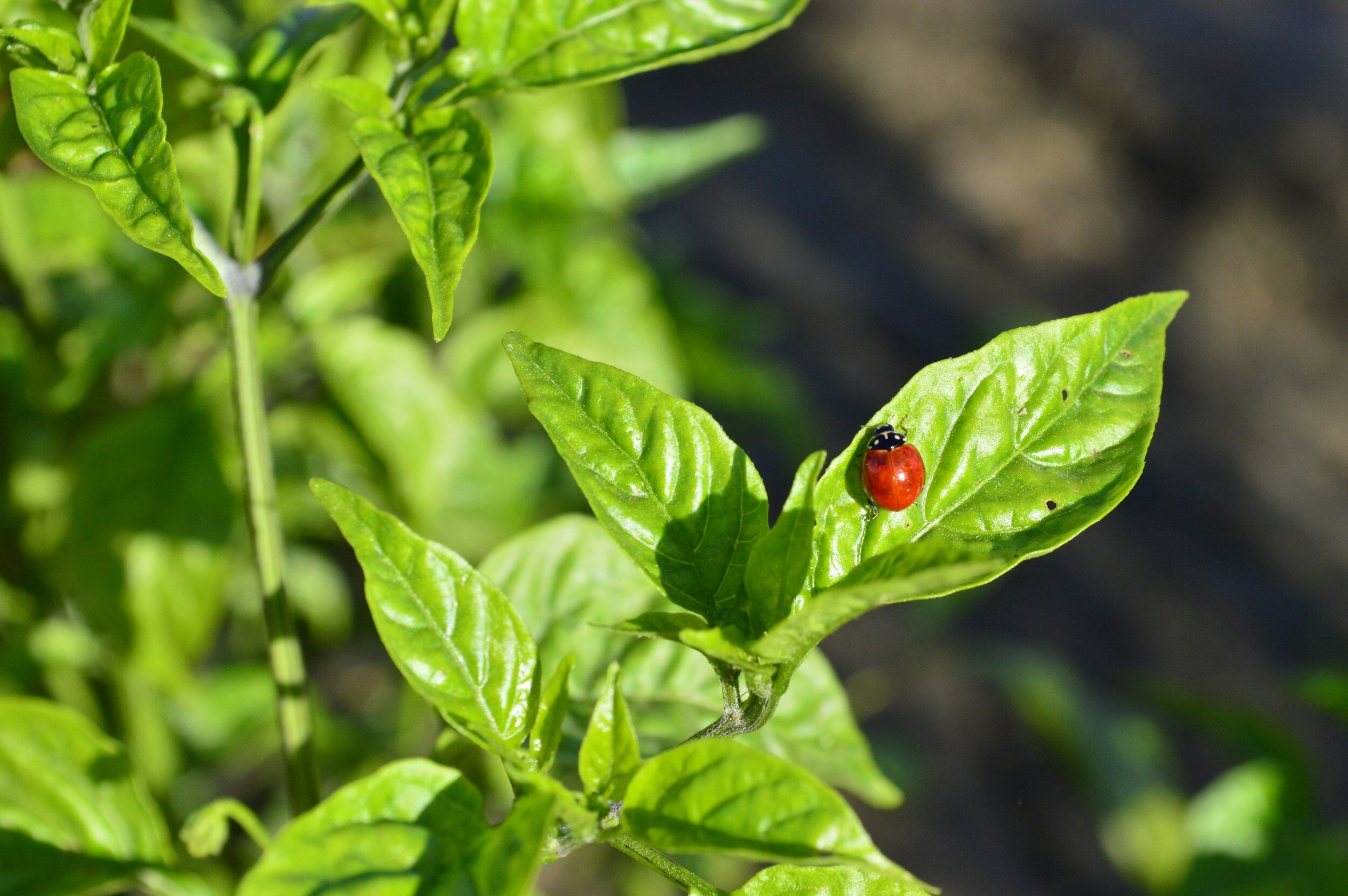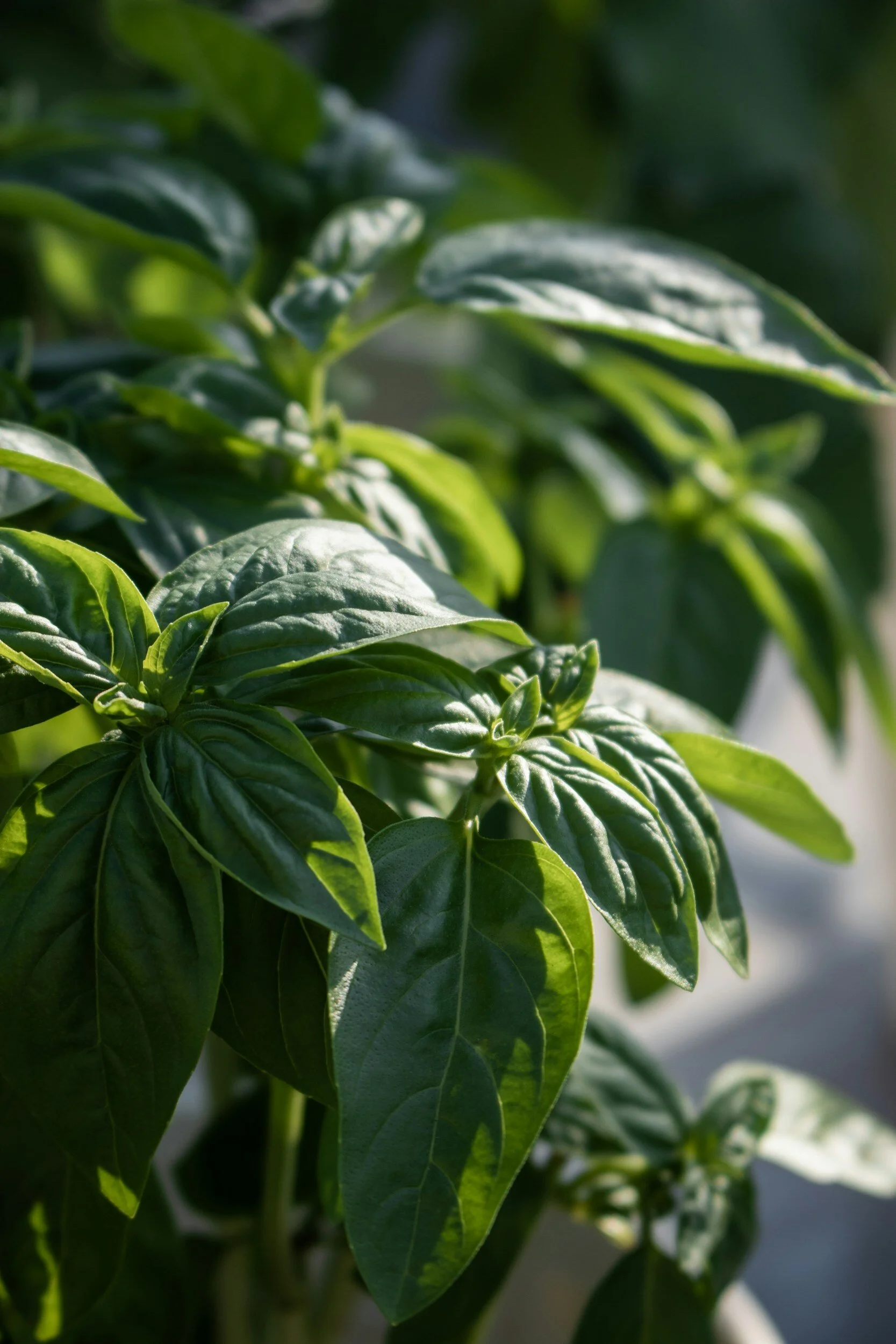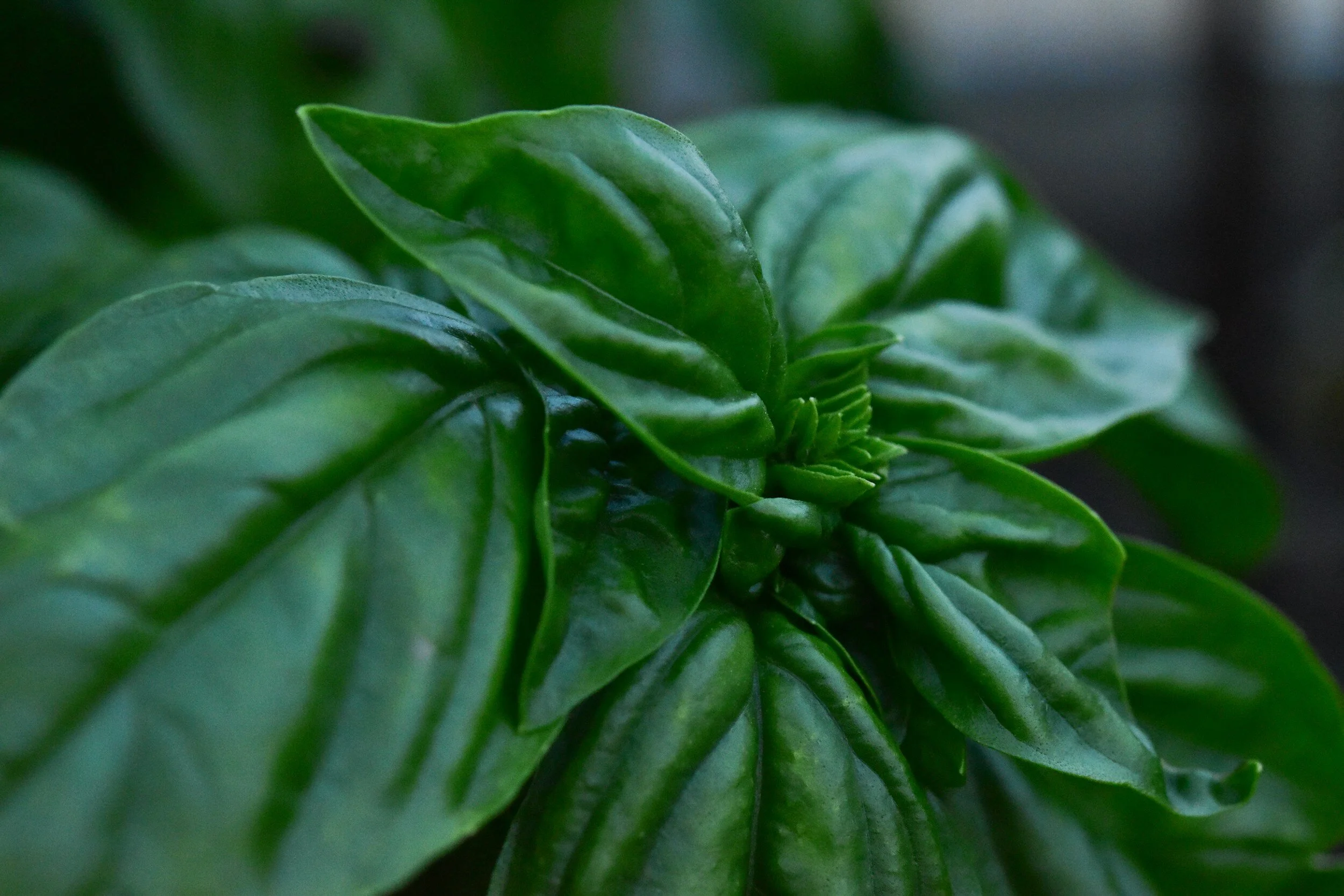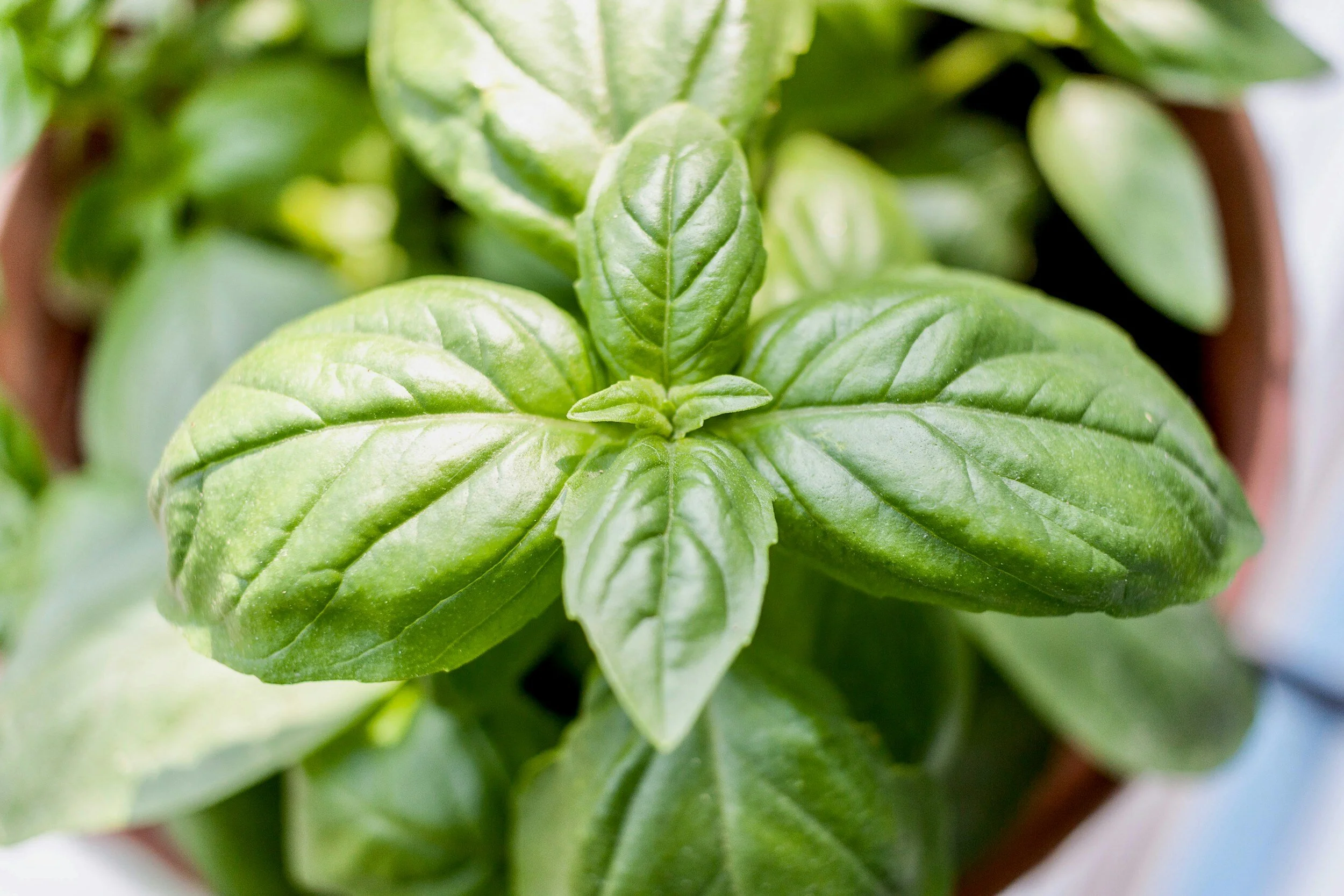The Best Basil Companion Plants
This website is reader-supported - thank you! This post may contain affiliate links. As an Amazon Associate, I earn from qualifying purchases at no extra cost to you.
Are you ready to transform your garden into a thriving haven for basil and its ideal plant partners?
Basil stands out as a beloved herb known for its fragrant leaves, but there's more to this herb than meets the taste buds.
It plays a pivotal role in companion planting, a method that smartly pairs different plants for mutual benefits.
In this guide I will take you through the art of pairing basil with other plants, unraveling the secrets to a more productive, pest-resistant, and visually stunning garden.
Understanding the companionship of basil is key to a healthy herb garden so join me on this journey through the best basil companion plants.
Top Companion Plants for Basil
When it comes to selecting companions for basil, there are lots of great choices.
Here are the top companions for basil:
Tomatoes:
Perhaps the most classic pairing, tomatoes and basil are not just a culinary match made in heaven but also great garden companions.
Basil helps repel pests like whiteflies that can harm tomatoes.
It's a mutual relationship, as tomatoes provide shade for basil in the heat of summer.
To learn more about growing tomatoes, check out my guides:
When to Start Tomato Seeds Indoors
Are Coffee Grounds Good for Tomato Plants?
Here are my favorite tomato seeds to grow:
Peppers:
Similar to tomatoes, peppers benefit from basil's pest-repelling abilities.
To learn more about growing peppers, check out my guides:
Growing Poblano Peppers: From Seed to Harvest
Growing Jalapeños in Pots: A Spicy Addition to Your Garden
Here are my favorite peppers to grow:
Beans and Asparagus:
Basil is a hero when it comes to repelling pests that prey on beans and asparagus.
It can deter pests like asparagus beetles and aphids, making it a protective ally in the garden.
To learn more about growing beans, check out my guide:
Easy Steps to Growing Green Beans in Containers
And to learn more about growing asparagus be sure to check out my guide:
The Best and Worst Companion Plants for Asparagus
Here are my favorite bean seeds to grow:
Cabbage Family:
This includes broccoli, cauliflower, kale, and Brussels sprouts.
Basil helps in repelling common pests like cabbage moths, making it an excellent companion for these vegetables.
To learn more about growing vegetables from the delicious cabbage family, check out my growing guides:
Here are my favorite kale seeds to grow:
Root Vegetables:
Carrots and radishes also make good companions for basil as these root vegetables do not compete with basil for space or nutrients.
To learn more about growing carrots, check out my guide The Ultimate Guide to Growing Carrots in Containers.
And to learn more about growing radishes, check out my guide Mastering the Art of Growing Radishes in a Container.
Here are my all-time favorite radishes to grow:
Marigolds:
Not just a pretty face, marigolds are another great companion for basil.
They repel nematodes and other pests, while their bright flowers attract beneficial pollinators to the garden.
To learn more about growing marigolds, check out my guide:
How to Pair Marigold Companion Plants
Here are the best marigold seeds to grow:
Oregano and Rosemary:
These herbs share similar light and water requirements with basil, making them harmonious companions.
To learn more about growing oregano, check out my guide:
The Undisputed Best Oregano Companion Plants
And to learn more about rosemary, check out my guide:
How to Propagate Rosemary: A Step-by-Step Guide
Here is my favorite oregano to grow:
Other Herbs:
Mint, chives, and parsley are also great companions for basil.
They thrive in similar conditions and collectively create a diverse, aromatic, and pest-resistant environment.
These would also all work great if grown together in a raised bed.
Check out my guide:
How to Start a Raised Bed Herb Garden
Thai Basil Companion Plants:
Thai basil, with its unique flavor profile, pairs well with plants like eggplant and green beans, enhancing their growth and flavor.
To learn more about growing eggplant, check out my guide The Best Eggplant Companion Plants.
Holy Basil Companion Plants:
Holy basil, known for its medicinal properties, benefits from being planted near peppers and tomatoes, similar to sweet basil.
Learn more about starting a garden with my guide:
For more companion planting tips, check out my guides:
Bad Companion Plants for Basil
While basil is a friendly and beneficial plant in many garden pairings, there are certain plants that it doesn't quite get along with.
Knowing which plants to avoid pairing with basil is crucial for maintaining a healthy and productive garden.
Here are some key examples:
Cucumbers:
Surprisingly, cucumbers are considered incompatible with basil.
Their shared need for water can lead to competition, stressing both plants.
To learn more about growing cucumbers, check out my guide A Guide to Growing Perfect Greenhouse Cucumbers.
Sage:
Sage and basil should not be planted close to each other.
Sage prefers drier conditions, while basil thrives in more moist environments.
This difference in water needs can create a conflict, hindering the growth of one or both herbs.
To learn more about growing sage, check out my guide From Garden to Kitchen: The Art of Harvesting Sage.
Thyme:
While many herbs complement basil, those with significantly different watering needs, such as thyme, which prefer drier conditions, might not be the best companions.
The differing water requirements can make it challenging to keep both plants happy.
To learn more about growing thyme, check out my guide Growing Thyme from Seed.
Melons and Squashes:
Similar to cucumbers, melons and squashes might not be the best companions for basil.
They require a lot of space and can overshadow smaller basil plants, limiting their access to sunlight and nutrients.
To learn more about growing melons, check out my guide The Best and Worst Cantaloupe Companion Plants.
And to learn more about growing squashes, check out my guide When to Harvest Butternut Squash.
Understanding these incompatible pairings is key to successful garden planning.
Avoiding these combinations can prevent issues like stunted growth, competition for resources, and flavor interference.
Every garden is unique, so observing how your plants interact is also a valuable part of the gardening journey.
For more companion planting inspiration, check out my guides:
Thriving Together: The Best Companion Plants for Swiss Chard
The Basics of Companion Planting with Basil
Companion planting with basil is a fascinating and beneficial aspect of gardening that goes beyond just placing plants next to each other.
It involves understanding the unique characteristics of basil and how they interact with and influence other plants.
Let's break down these basics to help you get the most out of your basil companion planting.
Spatial Considerations:
When companion planting with basil, consider the spatial requirements of each plant.
Basil generally prefers a bit of space to grow, but it can also benefit from the shade provided by taller plants like tomatoes during hot weather.
Soil and Water Needs:
Basil thrives in well-drained soil and requires a moderate amount of water.
Its companions should ideally have similar requirements to ensure they can coexist without competing for resources.
This similarity in needs creates a harmonious environment where each plant can thrive.
Timing and Succession Planting:
Planting basil alongside early-season crops can be beneficial.
As basil grows faster in warm conditions, it can be planted after early harvests, like lettuce, to maximize garden space and productivity throughout the season.
Learn more with my guide: What is Succession Planting? Grow More in Less Space.
Pollination and Attracting Beneficial Insects:
Basil's flowers are not just pretty; they are excellent at attracting pollinators like bees and beneficial insects that help in the overall health of the garden.
This makes basil an important plant for ensuring a thriving, pollinated garden.
Complementary Planting for Diversity:
Incorporating basil into your garden increases biodiversity, which is key to a healthy ecosystem.
A diverse garden is more resilient to pests and diseases, and companion planting with basil contributes significantly to this diversity.
For more vegetable garden tips, check out my guides:
Benefits of Basil Companion Planting
Companion planting with basil is not just about aesthetics or maximizing space in the garden; it brings a multitude of benefits that enhance both the health and yield of your plants.
Understanding these benefits can help you make the most of basil in your garden ecosystem.
Improved Pollination:
Basil attracts a variety of beneficial insects, including bees and butterflies, which are vital for pollination.
This is crucial for the health and productivity of your entire garden, as these pollinators help in the formation of fruits and seeds in many plants.
Companion Support and Shade:
Basil, when grown in proximity to taller plants, can benefit from the shade provided.
This is particularly beneficial in the peak of summer, where basil can be shielded from the harsh midday sun, preventing it from wilting or getting burnt.
Soil Health:
Companion planting with basil can contribute to healthier soil.
The diversity of plant life encouraged by companion planting leads to a more balanced soil ecosystem, which is beneficial for all plants in the garden.
Maximizing Garden Space:
By planting basil alongside other plants, you can make efficient use of your garden space.
This is particularly useful in smaller gardens or urban spaces where every inch counts.
Aesthetic Appeal:
Beyond its practical benefits, basil adds beauty to your garden.
Its lush green leaves and delicate flowers provide visual appeal, contributing to a garden's overall beauty.
Practical Tips for Growing Basil and Its Companions
Here are some practical tips to help you cultivate a thriving garden with basil and its companions:
Choosing the Right Location:
Basil loves sunlight and warmth.
Ensure it's planted in a spot that receives at least 6 to 8 hours of direct sunlight daily.
Its companions should have similar light requirements to ensure harmonious growth.
Basil does really well in a south-facing or west-facing garden position.
Soil Preparation:
Basil thrives in well-drained, nutrient-rich soil.
Before planting, enrich your soil with compost or a balanced organic fertilizer.
This will benefit not only the basil but also its companion plants.
Check out my guide to The Best Compost for Vegetable Gardens.
Watering Wisely:
Basil requires consistent moisture, but overwatering can be detrimental.
Water when the soil feels dry to the touch, and ensure good drainage to prevent root rot.
Companions with similar watering needs, like tomatoes, can be watered on the same schedule.
For more watering tips, check out my guides Water Butts: Sustainable Water Storage for Your Garden and How to Use Watering Globes.
Spacing for Success:
Provide enough space between your basil and its companions to allow for air circulation and growth.
Overcrowding can lead to competition for resources and increased susceptibility to disease.
Companion Planting Layout:
When planting basil with companions, consider their mature sizes and growth habits.
For example, plant basil in front of taller companions like tomatoes.
Pest Management:
Regularly inspect your basil and companion plants for signs of pests.
Natural remedies, like neem oil or insecticidal soap, can be effective for managing small infestations.
Here is the neem oil that I like to use:
Harvesting and Pruning:
Regularly harvest basil leaves to encourage bushier growth.
Pruning the top leaves can also stimulate the plant to produce more foliage.
Rotation and Succession Planting:
Rotate basil and its companions in your garden each year to prevent soil depletion and reduce disease build-up.
Succession planting, especially with fast-growing companions, can extend your harvest season.
Attracting Beneficial Insects:
Plant flowers like marigolds or nasturtiums near your basil and companions to attract beneficial insects that help with pest control and pollination.
Check out my guide Utilizing Nasturtium Companion Plants for Natural Pest Control.
Mulching:
Apply a layer of organic mulch around basil and companion plants to conserve moisture, suppress weeds, and regulate soil temperature.
For more tips on mulching, check out my guide The Best Alternatives to Traditional Mulch for Your Garden.
Fertilizing:
While basil isn't a heavy feeder, a mid-season boost with a balanced, organic fertilizer can benefit both basil and its companions.
Be mindful of each plant's specific nutritional needs.
Here is the fertilizer I recommend using for basil:
FAQs
Can I plant different types of basil together?
Absolutely! Different basil varieties can coexist and even benefit from each other's presence.
What herbs pair well with basil in a pot?
Herbs like parsley and cilantro make great pot companions for basil.
What are some uses for basil flowers?
Basil flowers are edible and can be used in salads, as garnish, or for making flavored oils.
The journey of integrating basil into your garden through companion planting is both a science and an art.
It's about creating a harmonious ecosystem where each plant contributes to the other's well-being.
While deterring pests naturally basil proves to be more than just delicious in the kitchen. It's a gardener's ally.
By understanding the right and wrong companions for basil, along with practical growing tips, you're well on your way to cultivating a garden that's not only productive but also beautiful.
So, go ahead, pair your basil wisely, and watch as your garden transforms.
Pin this post to save it for later!












































